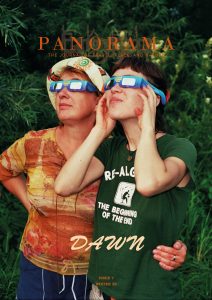Perfectly trimmed pines, cherry blossom petals meticulously swept from beds of moss, frolicking forbidden: public gardens in Japan got me thinking. What do our gardens say about us, and how can we use them to improve our relationship with nature?
*****
Never have I seen cherry blossoms as I did in Japan. They grew in blinding, shimmering groves where each falling petal was a kind of celebration. In Tokyo, pavements were littered with their confetti, and in parks, families sat on their picnic blankets as in a snowstorm. In Matsumoto, the snow-capped mountains in the distance stood as backdrop to the stark black Matsumoto Castle, whose moat was lined in white-crowned Sakura, reaching their heavy branches over the water. Thick carpets of white collected in the dark corners of the moat, eddying out in smoke-like swirls.
Just for a moment,
A whole hill covered in them,
I thought it was snow.
Cherry blossom trees have been the object of wonder in Japan for many centuries, with the first hanami, or cherry blossom viewing parties, being recorded during the Nara period (710-794 C.E.). There are well over 200 species of Sakura in Japan, the majority of which do not bear fruit. They have been so much cultivated that they have lost the ability to reproduce by themselves. They are purely for ornamentation, for our aesthetic enjoyment.
Cherry blossom trees are a prime example of us humans interfering with nature, exercising control over it, simply for our pleasure. Japan, as it turned out, was full of these instances. Not only the hyper-cultivated Sakura, but all the gardens I visited, from Tokyo to Kanazawa to Kyoto, had an element of order, of manipulation and control.
In the Kenroku-en gardens of Kanazawa an entire team of men in their hard hats, wielding shears and teetering atop long ladders, were snipping away at a tall pine, trimming its unruly branches into perfect twisting arms. Not far away was a group of women in traditional kasa hats, knelt on the soft moss, sweeping every last fallen leaf and cherry blossom petal into dustpans. The effort! And this was just one patch in this huge garden, and just one garden in Japan.
“It’s a pity it’s so untidy,” said Tamami, my guide in Kyoto, as we walked through the vast forest of bamboo at Arashiyama.
“Untidy?”
“There are so many leaves,” she replied, motioning to all the fallen bamboo leaves lying on the forest floor.
The perfection of Japanese gardens, however, became understandable when compared to other practices. If pedestrian traffic lights showed red, for example, no one dashed across the road, even if not a single car was in sight. In England, even more so in South Africa, the two countries I know well, people would have long since jaywalked, but in Japan no one moved. Another thing – the streets were spotless. No cigarette butts, no chewing gum squashed into the sidewalk, no plastic caught in the gutters. But there were no public bins either. In my entire time in Japan, I saw perhaps five bins, and they were most often specifically for glass. I asked Tamami about this, and she whipped out a plastic bag from her backpack, explaining that everyone just took their own trash home. England and South Africa, despite all their public bins, are often choked with litter.
And so, in a country where people are overwhelmingly disciplined and efficient, and where neatness and cleanliness are highly valued, it only makes sense that their gardens should be like this too. Gardens are, after all, an expression of our worldviews and our desires. One of the most innate of these desires is proximity to nature. As much as we strive to deny it, we are animals, and our original habitat was wilderness. In our modern cities, with our apartment blocks and cars and telephones and roads, we feel the lack. Gardens are our way of satiating that ancient need – even pot plants on a windowsill are an expression of this. Japan’s gardens present a fascinating meditation on our human relationship to nature.
The famous rock garden of Ryoan-ji in Kyoto is a collection of fifteen rocks placed in a very specific alignment in a bed of carefully chosen pebbles that are raked each day by monks in precise linear patterns. These patterns are meant to symbolise the ocean and the rocks are meant to represent islands. The irony of this beautiful arrangement is that though it represents natural environments of abundant life, it is itself completely devoid of life. Besides the moss growing on some of the rocks, there is no place for insects, birds, or any other animal to thrive. It is an ecological desert.
And so, when I overheard an American tourist ask his guide, “Are we zenning here?”, I thought, after my initial reaction of amusement, that perhaps he had hit upon an important point. Was this really where we were supposed to ‘zen’? Not only were there hundreds of tourists noisily walking on the squeaking floorboards of the terrace and talking loudly (like said American) to one another. The lack of zen, in my opinion, was also due to the lack of biodiversity. We and the moss were the only species in that space, not counting the millions of bacteria floating about between us. It was difficult to feel connected to something larger. As tranquil and elegant as Ryōan-ji seemed at first, it was not a place in which I would reach enlightenment.
On the other side of the temple, away from the tourists, I stood more of a chance. Here was a small pond, encircled by lush vegetation, fed by a quietly bubbling waterfall. Somewhere in the trees, I heard a strange knocking sound. Was it coming from the trees? Or was it coming from the rocks near the water? Could it be a woodpecker? A frog? Something else entirely? In those minutes of listening intently to that green sound, I was far more ‘zen’ than anyone observing the rock garden.
And yet, even here there was a barrier. In every garden in Japan, from Kanazawa to Kyoto, there was one thing that bothered me: it was forbidden to enter. I was only ever allowed to observe, to gaze in wonder from the wooden porch. Even if there were steppingstones leading into that verdant, dripping heart, a small stone bound in a bow of string and placed subtly on the first steppingstone indicated a polite request never to set foot on this hallowed ground.
A part of me understood – if every one of the thousand visitors to the Kenroku-en gardens, for example, were to frolic around on the divine carpets of moss that rolled out under the trees, as I had so wished to do, then soon there would be no moss left to appreciate. Humans, as well-meaning and joyful as we may be, would ruin anything we touched, simply because of our number.
And yet. What better way to be one with the universe, to feel part of something greater than oneself, to truly reach an understanding, an ‘enlightenment’ if you will, than entering with your whole body into a space of natural abundance? When my body is sensually aware of things beyond itself – of trees and water and earth – when I can touch them and move about in their space, I become aware of how that is also my space, that I belong and that it is worth caring about the fate of the natural world because it is equally my world.
Zen gardens are undeniably beautiful. They are quiet pockets of green silence in the otherwise bustling, often ugly cities of Japan. They are necessary for urban inhabitants to remember what nature is. But if nature is taken too far into the realm of art, does it not cease to be nature? Do we, by only ever observing from the outside in, by never actually touching the bark or the soft moss, forget that we are not looking at a painting but at ourselves?
On the Shinkansen between Kyoto and Tokyo, the wild recesses of the countryside whipped past my window. I longed to be in those mountains, in those strange young forms unweathered by time, still caught in the upsurge of earth, like crests of a wild sea, like folds in a great cloth. In the old woodblock prints, by Hiroshige, Hokusai and the like, the mountains had always looked fake, somehow too stylised. Now, on whizzing past them in the train, down the ancient way once known as the Tokkaidō, I saw that the artists had simply been painting what they saw. In Matsumoto, I had seen:
From the train window
Tucked into far winter hills
So brilliant and deep
The almost artificial
Shiver of cherry blossom
But here the forests were already green, the tide of spring having washed early on these shores. Dark swathes of maple, pine and dusty orange bamboo, with brilliant white speckles of magnolia and the sensual pink of camellias, their fallen petals gathering on the deep moss beneath their boughs. These and many more I could not name, all rising and falling in the strange undulations of the hills.
In the shade of those trees, I knew, nature was nature for nature’s sake. There the pines grew untamed and fallen leaves sunk into slow decay and teemed with many lives. That was art enough. No need for control and precision and ‘neatness’ – there was an unseen beauty in those forests that no zen garden could ever replicate. It was a pity I was rushing by in the bullet train and not walking along the ancient Tokkaidō path between Kyoto and Tokyo along which many travellers over the ages had slept on pillows of moss. They will have encountered the beauty of Japanese nature in its original form, will have been able to touch the trees and the flowers and bathe in sparkling streams, without politely ribboned stones forbidding entry. They will have been alone too. Just them and the trees, and the birds, and perhaps a close friend joining them on their travels. Silence to contemplate and dissolve into their surroundings. That was where they would have been ‘zenning’ and sensing the interconnectedness of all things.
Alas, our modern world and the lives we lead have largely been stripped of zen. We live sped-up, oversaturated lives where the volume has been turned up, the flavours magnified, the number of images we are bombarded with daily increased one-thousand-fold. More and more of us are moving to sprawling cities that are almost completely devoid of biodiverse nature. Tokyo is the prime example of this – it is just city, from horizon to horizon, one gigantic, heaving concrete desert. In cities like this, there are no natural spaces to zen, and often no mental space to reach those tranquil states, which means we are no longer able to connect to nature in a meaningful way, in a way that changes us for the better.
Despite their lack of wildness, however, there was something undeniably beautiful about the Japanese gardens I visited. The gardens in Kyoto especially, in their rain-drenched lusciousness, were endlessly enchanting. Artfully contorted pine branches reflected in perfectly still ponds, moss in so many earthly shades spilt over perfectly placed rocks and pooled beneath the blossom trees in untouched shade. Gleaming golden koi wove slowly, snakelike, from quivering light to leaf-cut shadow. A green-feathered uguisu sang its bubbling song unseen.
There was a constant contradiction in what I saw and felt – wonder, mixed with a quiet sense of the alien. Perhaps this was all entirely normal, simply the reaction of a foreigner encountering a new land for the first time. It is what makes travel so essential to one’s growth as a person. We are confronted with a way of being very different from our own and gain perspective on our home. In the beautiful strangeness of the Japanese garden, I was reminded of the perfection in French gardens, and of the artfulness of Keukenhof near Amsterdam. I wondered at not being allowed entry, even when stepping stones beckoned enticingly into the moss, but realised the game parks in South Africa were also just there to be observed. You sat in your car or safari vehicle and watched the other animals from a distance, entirely removed. It is only on walking safaris that you learn something important about your identity as a human. It is a necessary learning curve to enter into a natural space, with all one’s human thoughts and feelings, and be confronted by both the dissonance and the familiarity.
Perhaps this is what the Japanese have tried – to blur the boundary between art and nature, between human culture and nature. This is something more and more artists and philosophers are exploring – the definitions of ‘nature’ and ‘culture’, and where we see ourselves in those definitions. The boundary between the human and the non-human. Is the realm of the non-human purely ‘nature’, and the realm of the human purely ‘culture’? Or is there an overlap, or translation?
The work of Japanese gardeners or Zen monks in their gardens is an introduction of human culture into the realm of nature. The divide between what is considered ‘nature’ and what is considered ‘art’ is complicated. It is important to blur this nature/culture divide, as this is one of the central psychological barriers to recognising the plight of our planet as intrinsically linked to our own lives. It is a boundary that should be crossed, but the ways we do this are endlessly varied. Japanese gardens are one way in which humans can enter the nonhuman realm, but not the only and perhaps not the most helpful way, especially if biodiversity suffers as a result.
We should equally be asking ourselves how we can involve nature more in our human spaces, in such a way that we are reminded of our identity in nature, not as separate from it. Gardens are already an attempt at bringing nature closer, but, particularly in our cities and urban spaces, our public gardens need to evolve. We need undomesticated spaces that remind us of what wild nature can look like, and to provide an essential perspective on our own lives as seen in a greater web. This is only possible if we have easy access to biodiverse, thriving ecosystems on our doorsteps. Public parks and gardens are the ideal place to start. Many other exciting possibilities wait to be (re)discovered.
For the planetary crisis to begin to be addressed correctly, we need to know where we stand and what our relationship to the nonhuman world is. Once we can acknowledge our interconnectedness with everything, we are far better equipped to start working on positive solutions. A garden, therefore, is not merely a garden. It is a way in which we commune with nature, and so the manner in which we shape our gardens and allow others to interact with them matters. A garden is a philosophy laid bare, writ in green across the earth. Just as our gardens take on the shape of our thoughts, it matters how we shape our gardens in order to change the way we think.











